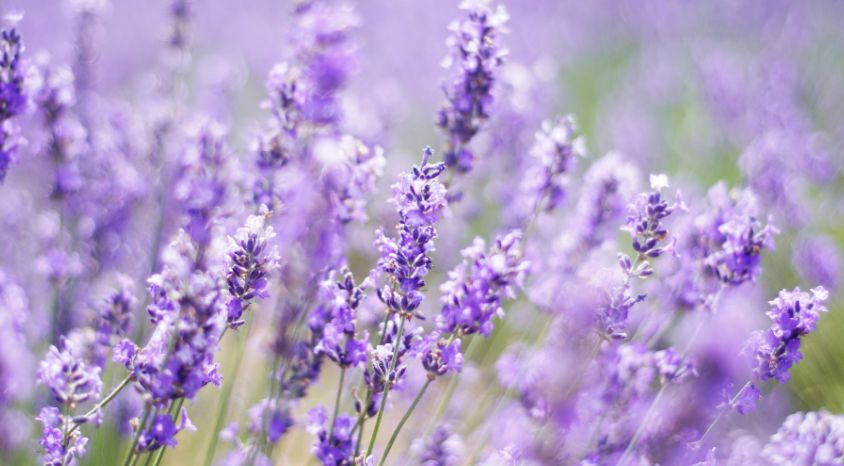The Surprising Health Benefits of Lavender
Lavender has been used for centuries for its amazing healing properties. It is an herb that is part of the mint family and is known for its purple flowers. Lavender has many different uses, from helping with stress levels to being a natural remedy for headaches. In this blog post, we will explore some of the different health benefits of lavender and how you can use it to improve your overall health.
Lavender has long been used as a holy herb. Additionally, it has been used to freshen up clothes and hair. Today, lavender is still popular for its therapeutic properties. It can be used to treat a variety of issues, such as Asthma, insomnia, and depression.
Lavender has been used for centuries for its medicinal and therapeutic benefits. It can be used to treat a variety of medical issues, without the risk of unpleasant side effects.
If you are struggling to get a restful night’s sleep, you may want to try placing a few drops of lavender essential oil on your pillow tonight. Just be sure not to ingest it, or any other essential oil, as this can be dangerous.
Lavender oil has long been used for its calming and relaxing properties, but did you know that it can also be beneficial for your skin?
The antioxidant activity of lavender may also contribute to wound healing. Just be sure to check with your dermatologist before adding lavender to your skincare regimen, to ensure it won’t interact with any of the medication you’re currently taking.
When it comes to dealing with pain, there are a variety of options available. For some people, over-the-counter pain relievers are enough to help manage the discomfort. However, for others, prescription medication may be necessary.
For those looking for a more natural approach, aromatherapy with lavender essential oil can be an effective option. Lavender oil contains linalyl acetate and linalool, which are anti-inflammatory components that can help to reduce swelling and inflammation.
However, more research is needed to confirm these potential benefits. If you are interested in using lavender oil for high blood pressure, speak with your doctor first to discuss whether it is right for you.
Recently, scientific research has begun to explore the potential health benefits of lavender, with some studies suggesting that it may have helpful effects on certain respiratory conditions.
Whether the same effect would be seen in humans remains unclear, but the findings of this study suggest that lavender may have potential as a natural treatment for bronchial asthma.
Hot flashes are a common symptom of menopause, affecting millions of women around the world. These sudden feelings of heat can be extremely uncomfortable, making the face flush and triggering perspiration.
In severe cases, hot flashes can interfere with sleep and result in feelings of anxiety or irritability. some treatments can help to reduce their frequency and severity.
Athletes’ feet and ringworm are both common fungal infections that can cause a lot of discomfort. The lavender essential oil has antifungal properties that make it an effective treatment for both of these conditions.
In addition to its antifungal properties, lavender oil is also known for its calming and relaxing effect on the body. This makes it an ideal treatment for people who are suffering from athlete’s foot or ringworm, as the itchiness can often be very irritating.
These findings suggest that lavender oil could potentially be used as a treatment for hair loss in humans, though more research is needed. Given that lavender oil is relatively safe and inexpensive, it may be worth trying as a natural treatment for hair loss.
If you do decide to give it a try, be sure to apply the oil to clean skin and consult with your doctor beforehand to ensure that it won’t interact with any other medications you may be taking.
Lavender is known for its calming and relaxing effects, which can help reduce stress, anxiety, and depression. There’s plenty of research that suggests lavender has positive effects on mood, stress, anxiety, and depression.
The use of lavender essential oil has been found to provide relief for symptoms of premenstrual syndromes, such as anxiety, depression, and nervousness.
Lavender is available in different forms depending on how you want to use it.
For example, lavender oil is nectar extracted from the flowering plant and can be used for aromatherapy by being massaged into the skin, placed in a diffuser, or applied to a pillow or cotton swab and inhaled.
Lavender plants are sweetly scented perennials that add color to a garden and give off a sweet aroma.
You can also purchase lavender as a supplement in capsule form which, when taken as directed, can have medicinal benefits but you should always work with your healthcare provider first to ensure there are no negative interactions with any medication you’re taking. It’s also important to know that supplements aren’t regulated by the Food and Drug Administration (FDA).
If you’re looking for a soothing and refreshing beverage, look no further than lavender tea. This fragrant tea is made from the flowers of the lavender plant and has a long history of being used for its calming properties.
There are many different types of lavender, and each one has its unique benefits.
Lavandula stoechas is often used by trained professionals to help with emotional, skin, respiratory, and muscular issues.
Lavandula angustifolia is a good choice for those who want to relieve nervousness, headaches, insomnia, menstrual cramps, or respiratory problems.
And Lavandula latifolia can help with headaches, respiratory issues, inflammation, bug bites, and muscular or joint pain.
Lavender should be planted in the spring, allowing about two to three feet between each plant. It is important to choose an area that does not receive a lot of moisture, as this can damage the plants.
Lavender is a low-maintenance plant, so you only need to water it about once or twice a week when the plants are first getting established. Once the plants are mature, you can slowly reduce the amount of watering to every two to three weeks.
Harvesting begins when about half of the buds have opened. Cut the stems long and bundle them together, then place the lavender bundles in a cool, dark place to dry.
With proper care, your lavender plants will thrive and provide your garden with beautiful color and fragrance for many years to come.
Although lavender is a popular herb with many purported health benefits, it is important to be aware of potential risks or side effects associated with its use.
For example, lavender oil can be poisonous if ingested, and symptoms of poisoning can include difficulty breathing, vomiting, and diarrhea.
Some people are also sensitive to lavender and may experience an upset stomach, joint pain, or headache after using the herb.
In addition, although lavender is okay on the skin, there is the risk of an allergic reaction or skin irritation.
Signs of a reaction include bumps, redness, or a burning sensation. Therefore, it is important to stop using lavender if you have any signs of sensitivity or a reaction.
It is not clear how often this occurs or what the exact cause is, but it is thought that the repeated use of lavender may be a factor. Some boys who have used lavender products have developed breasts and nipples that are larger than normal.
Lavender is a versatile plant that can be used for a variety of purposes. It has a pleasant aroma, and it can also help you cope with various ailments. In oil, capsule, or tea form, adding lavender to your regimen may be beneficial for you.
The post The Surprising Health Benefits of Lavender appeared first on Healthy Choice Reviews.




